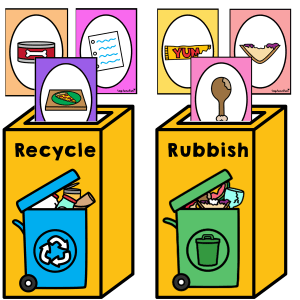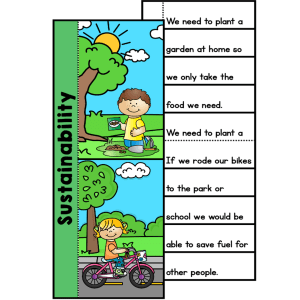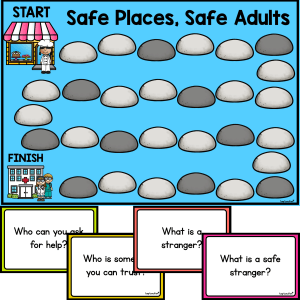Catapult Chaos Paper Field Games STEM Activity

Description
Get ready for some flying fun with Catapult Chaos: Paper Field Games STEM Activity - a hands-on, high-energy resource designed to develop measurement skills through real-world problem solving. This engaging STEM challenge gets students estimating and measuring using multiple formal units, all while building and testing their very own paper-launching catapults.
Students will work individually or in teams to design and construct a simple catapult using craft materials such as pop sticks, rubber bands and a bottle cap. Once built, students will use sticky notes as their projectiles and test how far they can launch them across a makeshift field. This paper-based competition is the perfect combination of design, experimentation and measurement.
The activity guides students through different stages of measuring - starting with estimation using metre-spaced floor markings, followed by more accurate measurements using centimetres and finally millimetres. This progression helps them understand the value and purpose of each measurement scale, reinforcing both practical maths skills and scientific thinking.
Key Learning Outcomes
- ✅ Develop an understanding of length using formal units (metres, centimetres, millimetres)
- ✅ Accurately estimate and measure distances using appropriate tools
- ✅ Apply STEM design processes to build and modify a functional catapult
- ✅ Reflect on outcomes and design choices using critical thinking questions
What’s Included
- Teacher instruction page with setup guidance
- Visual catapult building instructions using pop sticks and rubber bands
- Student recording sheet for launching attempts and measurements
- Reflection sheet with five discussion questions to guide analysis
Materials Needed
- Pop sticks (paddle pop sticks or craft sticks)
- Rubber bands
- Bottle caps (for holding the sticky note projectile)
- Crumpled sticky notes or other small, light projectiles
- Measuring tools - metre floor markings, centimetre rulers and millimetre rulers
- Tape, glue, pencils and student worksheets (included)
How to Use
- Introduce the concept by showing a simple catapult and discussing estimation and measurement techniques.
- Hand out the catapult build instructions and materials, allowing students time to construct and modify their device.
- Create a measurement track using metre-apart tape strips on the classroom floor.
- Students launch their sticky note and estimate how far it travelled using floor markings.
- Then, they use a ruler to measure more precisely in centimetres and finally in millimetres.
- Complete the recording sheet with all measurements and observations.
- End with a group discussion or written reflection using the five included questions.
Ideas for Classroom Use
- 💡 Hold a 'Paper Field Games' day by combining this with other paper-based STEM challenges
- 💡 Assign team roles (builder, measurer, launcher, recorder) to support collaboration
- 💡 Encourage students to create and test their own origami catapult as a challenge extension
- 💡 Use in rotations as part of a measurement or STEM learning centre
- 💡 Integrate with our Formal Length Scavenger Hunt: Centimetres & Metres Worksheets to deepen understanding of formal units
Top Teacher Tips
- 💛 Print student sheets on coloured paper to help differentiate groups or levels
- 💛 Laminate the instruction cards for reuse across multiple rotations
- 💛 Allow students to compare results between groups to encourage discussion about accuracy and consistency
- 💛 Combine results into a class graph to extend the lesson into a data analysis activity
This active and creative STEM task is perfect for supporting student understanding of formal measurement units while giving them a chance to innovate, explore and have fun. It’s an ideal pick for whole-class investigations, team challenges or end-of-term STEM days.
Additional information
| Number of Pages | 4 |
|---|---|
| File Format | |
| Australian Curriculum Code | AC9M5M01, AC9M6M01, AC9TDE6P03, AC9TDE6P05 |
Australian Curriculum V9
F - 6
Lorem ipsum dolor sit amet, consectetur adipiscing elit.
Lorem ipsum dolor sit amet, consectetur adipiscing elit.
Lorem ipsum/ Lorem ipsum/ Lorem ipsum
Lorem ipsum dolor sit amet, consectetur adipiscing elit.
Lorem ipsum dolor sit amet, consectetur adipiscing elit.
Lorem ipsum/ Lorem ipsum/ Lorem ipsum
Lorem ipsum dolor sit amet, consectetur adipiscing elit.
Lorem ipsum dolor sit amet, consectetur adipiscing elit.
Lorem ipsum/ Lorem ipsum/ Lorem ipsum
Lorem ipsum dolor sit amet, consectetur adipiscing elit.
Lorem ipsum dolor sit amet, consectetur adipiscing elit.
Lorem ipsum/ Lorem ipsum/ Lorem ipsum
Lorem ipsum dolor sit amet, consectetur adipiscing elit.
Lorem ipsum dolor sit amet, consectetur adipiscing elit.
Lorem ipsum/ Lorem ipsum/ Lorem ipsum





